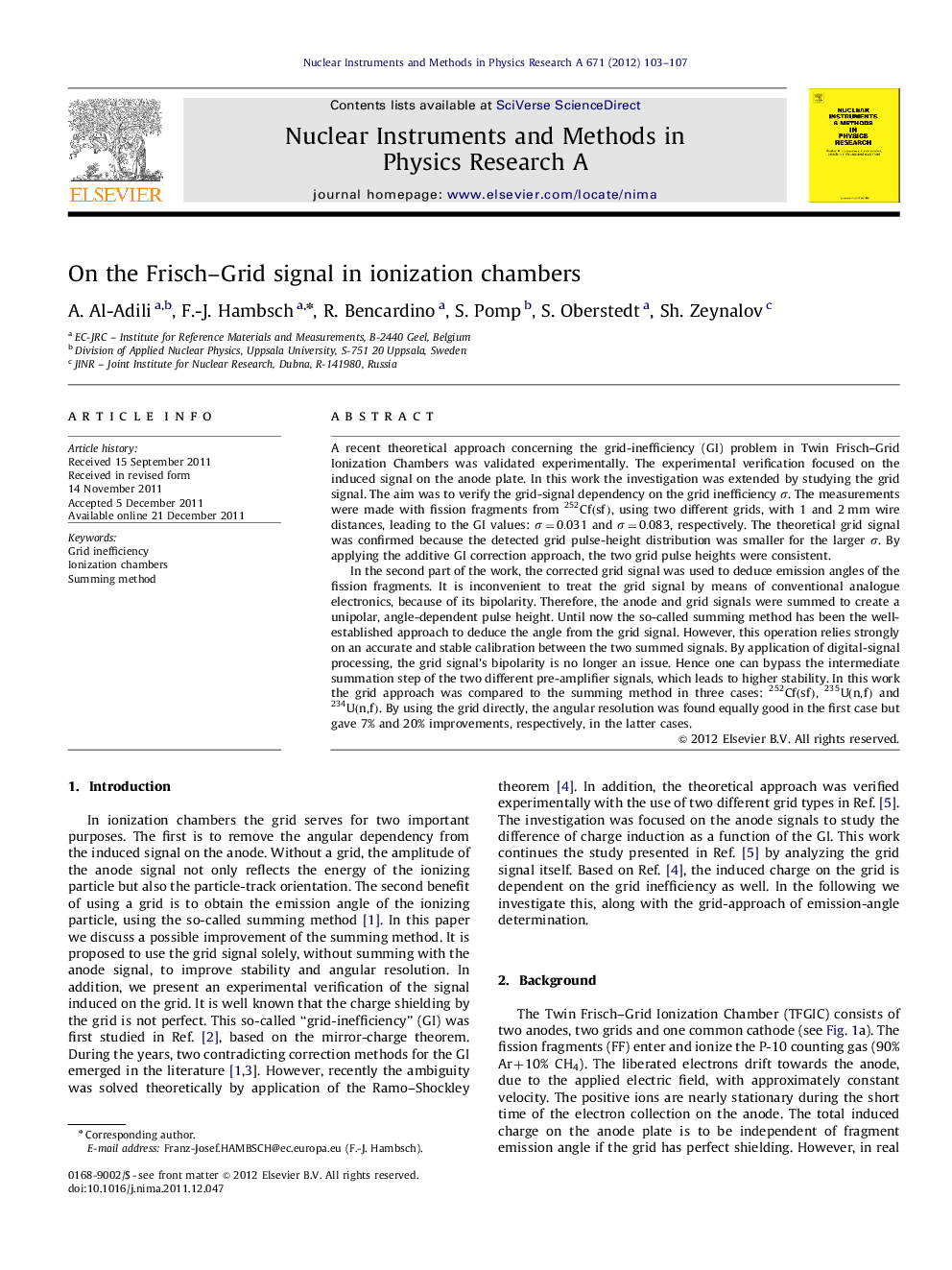| Article ID | Journal | Published Year | Pages | File Type |
|---|---|---|---|---|
| 1823893 | Nuclear Instruments and Methods in Physics Research Section A: Accelerators, Spectrometers, Detectors and Associated Equipment | 2012 | 5 Pages |
A recent theoretical approach concerning the grid-inefficiency (GI) problem in Twin Frisch–Grid Ionization Chambers was validated experimentally. The experimental verification focused on the induced signal on the anode plate. In this work the investigation was extended by studying the grid signal. The aim was to verify the grid-signal dependency on the grid inefficiency σσ. The measurements were made with fission fragments from Cf(sf)252, using two different grids, with 1 and 2 mm wire distances, leading to the GI values: σ=0.031σ=0.031 and σ=0.083σ=0.083, respectively. The theoretical grid signal was confirmed because the detected grid pulse-height distribution was smaller for the larger σσ. By applying the additive GI correction approach, the two grid pulse heights were consistent.In the second part of the work, the corrected grid signal was used to deduce emission angles of the fission fragments. It is inconvenient to treat the grid signal by means of conventional analogue electronics, because of its bipolarity. Therefore, the anode and grid signals were summed to create a unipolar, angle-dependent pulse height. Until now the so-called summing method has been the well-established approach to deduce the angle from the grid signal. However, this operation relies strongly on an accurate and stable calibration between the two summed signals. By application of digital-signal processing, the grid signal's bipolarity is no longer an issue. Hence one can bypass the intermediate summation step of the two different pre-amplifier signals, which leads to higher stability. In this work the grid approach was compared to the summing method in three cases: Cf(sf)252, U(n,f)235 and U(n,f)234. By using the grid directly, the angular resolution was found equally good in the first case but gave 7% and 20% improvements, respectively, in the latter cases.
